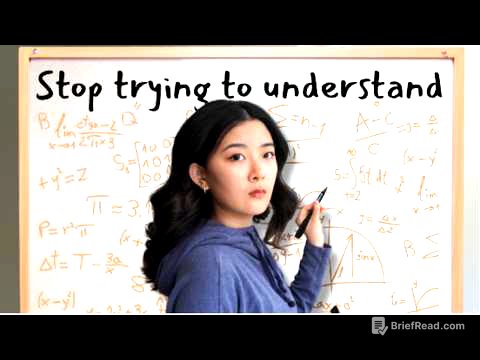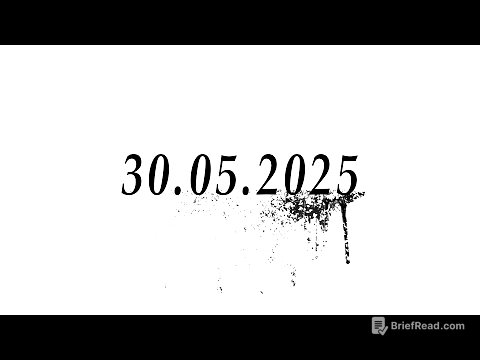TLDR;
This lecture provides a comprehensive guide to responses and weighing in debate, tailored for novice to intermediate debaters while also introducing advanced concepts. It covers the purpose and structure of responses, a detailed five-step response framework, and various methods for effective weighing of arguments. The lecture emphasizes strategic thinking, comparative analysis, and the importance of aligning arguments with overall debate metrics.
- Purpose and categorization of responses
- Five-step response structure: What did they say, Meta call out, Not true, Even if, Conclusion
- Weighing arguments: scale, gravity, vulnerability, urgency, sustainability, risk aversion, agency, and likelihood of impact
Introduction [0:01]
The lecture introduces the topic of responses and weighing in debate, specifically curated for novice to intermediate debaters, while also touching on advanced concepts. The session aims to equip debaters with the tools to effectively engage with opposing arguments and strategically position their own within a debate round.
Purpose of Response [0:24]
Responses in debate directly engage with the arguments of the opposing side, aiming to prove them wrong, irrelevant, comparatively unimportant, insufficient, or inferior. The purpose of a response can be categorized into three aspects: direct attack, comparative explanation of cases, and demonstrating the insufficiency of the opposing team's arguments, particularly their failure to meet the burden of proof. When preparing a debate speech, it's crucial to consider the purpose of the response and prioritize which arguments to address within the limited time.
Argument Structure Recap [2:09]
An argument typically consists of a claim, analysis (explaining why the claim is true), impact (the effect of the claim), weighing, and a conclusion. Arguments are like Dominos, where responding to the analysis can cause the entire argument to collapse because the impact, weighing, and conclusion are contingent on the analysis. Key pinpoints to respond to include the analysis itself (characterization, mechanization), the impact, and the weighing. The strategy involves identifying where the case is most reliant or contingent and focusing on debunking that aspect.
Response Structure: Five Steps [4:14]
The response structure consists of five steps: "What did they say," "Meta call out," "Not true," "Even if," and "Conclusion." The first step, "What did they say," involves signposting to the judge the specific part of the opposing team's speech being addressed, summarizing it concisely. The second step, "Meta call out," addresses the quality of the argument by identifying and explaining any lapses in their argument, such as a lack of incentive or capacity analysis, counterfactual or comparative model, or mechanization of the claim to the impact.
Response Structure: Not True and Even If [10:33]
The "Not true" step involves directly attacking the argument of the other team to explain why they are wrong by providing a counter frame and explaining why that frame should be prioritized. The "Even if" response explains that their case is comparatively unimportant. This can be achieved by arguing that their benefit is symmetric, mitigating the argument, flipping the argument, explaining a negative externality, or weighing one's own argument.
Response Structure: Conclusion [18:19]
The conclusion serves to position the response strategically within the debate. It involves answering what the response achieves within the debate and including a burden push to compel the opposing team to engage with the material. The response can be positioned at the start of a speech or within specific issues, aiming to demonstrate the unimportance of the opposing case or force engagement with one's own arguments.
Introduction to Weighing [20:39]
Weighing is the metric or standard used to assess a certain impact or mechanism, answering why an argument matters, while meta explains how an argument or framing relates to the opposing team's arguments or the overall debate. Understanding competing frameworks is crucial, where judges should assess the debate based on agreed-upon criteria or principles, rather than their own preferences. The lecture outlines a hierarchy for determining the appropriate framework, starting with explicit agreement, implicit agreement, successful proof by one team, and finally, what an ordinary intelligent voter would consider important.
Competing Frameworks [22:57]
Competing frameworks are illustrated through examples, emphasizing the importance of positioning arguments strategically and proving the importance of one's case. The lecture highlights that winning a debate is not about the quantity of issues won but about demonstrating that one's case is more important.
How to Weigh an Argument [27:05]
There are eight ways to weigh an argument: scale (number of people impacted), gravity (magnitude of impact), vulnerability (assessing the need of the stakeholder), urgency (why it should be done now), sustainability (long-term impacts), risk aversion (preventing harm), agency (people's right to control their lives), and likelihood of impact (certainty). When arguing, multiple metrics can be applied if applicable and logical.
Applying Weighing in Rounds [33:09]
To apply weighing effectively, one must first ensure the claim is sufficiently proven. Then, identify the applicable impact metric and determine if there's an agreed-upon overall metric for the debate. If so, explain how the impact metric fulfills the overall metric and why it should be preferred. If not, introduce another overall metric, proving its importance and explaining how the impact metric fulfills it.
Illustration of Weighing [35:41]
An illustration is provided to demonstrate the application of weighing and meta-weighing within a debate, emphasizing that weighing proves the importance of an argument, while meta explains its positioning within the round and how it can defeat the opposing team's argument.
Final Reminders [39:12]
The lecture concludes with final reminders, emphasizing that every response and weighing should have a purpose, application takes time and practice, engagement should be dynamic, and while response and weighing are important, prioritizing argument construction is crucial. The lecture encourages debaters to ask themselves what they want to achieve within the debate and to continuously practice and refine their skills.









